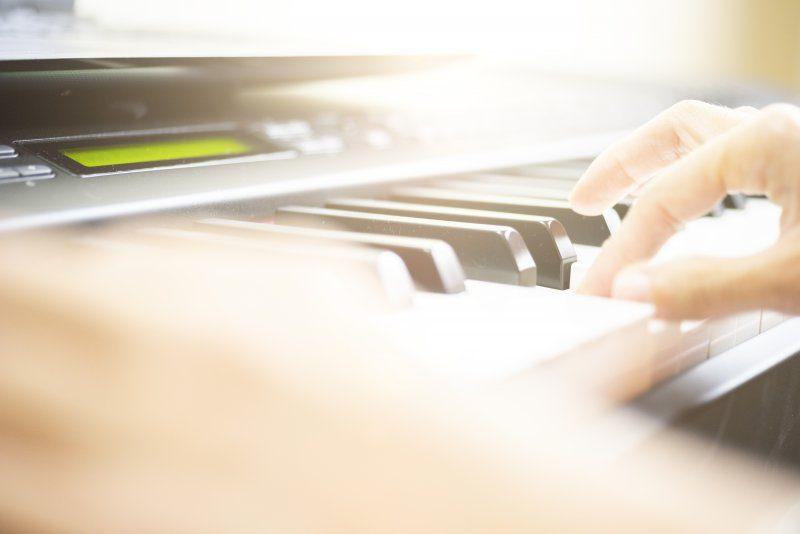Ready to practice your piano scales? Break out that metronome and consider this advice from online piano teacher Crystal B...
There’s no right or wrong answer when it comes to practicing piano scales at different tempos. However, some tempos will be more beneficial than others in helping you improve your playing skills. In this blog post, we’ll discuss what tempo you should practice scales at and why. Stay tuned!
What Are Scales on a Piano?
Here are a few basic facts about piano scales:
- A scale is a musical technique used to measure the pitch of notes.
- Scales are typically made up of seven notes, with each note being separated by a whole step or a half step.
- The most commonly used scale in Western music is the piano major scales, which consists of the following notes: C, D, E, F, G, A, B.
- The notes of a major scale piano are typically played in ascending or descending order.
- Other popular scales include the piano minor scales, the chromatic scale, and the pentatonic scale piano. Each type of scale, minor scales piano or otherwise, has its own unique sound and can be used to create different styles of music.
If you’re new to playing piano, taking piano lessons can help. You’ll learn everything you need to know about piano scales, plus this kind of information that you see in the video below:https://www.youtube.com/watch?v=hCtgL5C-e2M
What Piano Scale Should I Learn First?
As a beginner piano student, you may be wondering what piano scale you should learn first.
While there are many different scales to choose from, the best place to start is with the major scale. The major scale is one of the most commonly used scales in music, and it provides a strong foundation for learning more advanced scales. The major scale consists of seven notes, which are arranged in a specific order.
Once you have learned the major scale, you can start to experiment with other scales, such as the minor scale or the chromatic scale. Each type of scale has its own unique sound, so you can mix and match scales to create your own unique melodies.
With a little practice, you’ll be able to play any scale you want on the piano.
Ideal Tempo for Piano Scales
When it comes to practicing piano scales, the subject of tempo always comes up. Many students are unsure of what tempo scales should be practiced, and the truth of the matter is, the answer will vary depending on the student. A good rule of thumb is always start slowly and work your way up to faster tempos. Here are some tips to help you assess your individual abilities and decide on a good starting tempo.
What tempo can you play the scale with note accuracy?
One of the main reasons for practicing piano scales is to learn the correct notes in each scale. I have seen cases where students will try to play the scales too fast and in the process, they miss notes or play incorrect notes. When you are first learning scales, start slow enough to really think about the notes you are playing. Which notes are flat? Which notes are sharp?
What tempo can you play each note evenly?
In addition to the theory knowledge they provide, playing through scales is also a great technical exercise! To get the full benefit of the exercise, make sure that as you play through the scale, all of the notes are played evenly. If you find that you are playing at a tempo which causes certain notes to be played faster than others, slow down! You can always speed up once you have a perfectly even scale. And make sure you don’t use the pedal while practicing this way. You want to be able to really hear the transition from note to note.
What tempo can you play the scale with the correct fingering?
This is such an important factor that gets overlooked many times during piano practice. But missing this critical step will make it very difficult to accomplish the task of playing each note evenly — especially once you try to start increasing your speed! I definitely recommend playing each hand separately before trying to play your right and left hand together. This is very important when you’re learning correct fingering because each hand is crossing over or tucking under at different points. Getting this right will take lots of practice, but it is well worth the investment of time and effort. After a certain point, your fingers will be able to do this on auto-pilot and the good news is, many of the scales use the same fingering.
The most important thing to remember is to start slowly! Fight the urge to play too fast in the beginning. Remember, you can always increase your tempo (and should!) once you have mastered the correct way to play the scale and can do so evenly.
Consider the type of piano scales you’re playing
There’s no definitive answer to the question of which tempo you should practice your piano scales at. It depends on the type of scale you’re playing, as well as your own personal preferences. For blues scales piano, a slower tempo can help to give the music a more soulful feel.
Pentatonic scales can be played relatively fast or slow, depending on the effect you’re going for.
And jazz scales piano can be played at a variety of tempos, depending on the style of jazz you’re trying to emulate.
Ultimately, the best way to figure out which tempo is right for you is to experiment and find what feels comfortable. There’s no right or wrong answer – it’s all about what works best for you and your own musical style.
Piano Scales and Chords Exercises
Piano scales and chords exercises are essential for any serious pianist. Scales help to build technique and strength, while chords provide a foundation for understanding harmony and theory.
There are many different ways to approach scales and chords, but one effective method is to practice them in both hands simultaneously. This way, you can learn to balance the weight of each hand and develop a more even touch. Start by playing simple scale patterns in both hands, then move on to more complex chord progressions.
Using a piano scales chart can help, too.
With regular practice, you’ll soon be able to integrate these exercises into your overall piano playing.
So, what tempo should you practice your piano scales at? Ultimately, it’s up to you and how comfortable you feel with a certain tempo. However, we recommend starting out slowly and gradually increasing the speed as you get more comfortable.
By following these tips and practicing regularly with your piano teacher, you’ll be playing scales like a pro in no time!
 Crystal B. teaches piano online. She has been teaching all ages and levels for more than 15 years. Learn more about Crystal here!
Crystal B. teaches piano online. She has been teaching all ages and levels for more than 15 years. Learn more about Crystal here!
Photo by Jørgen Schyberg
Jill Cole

